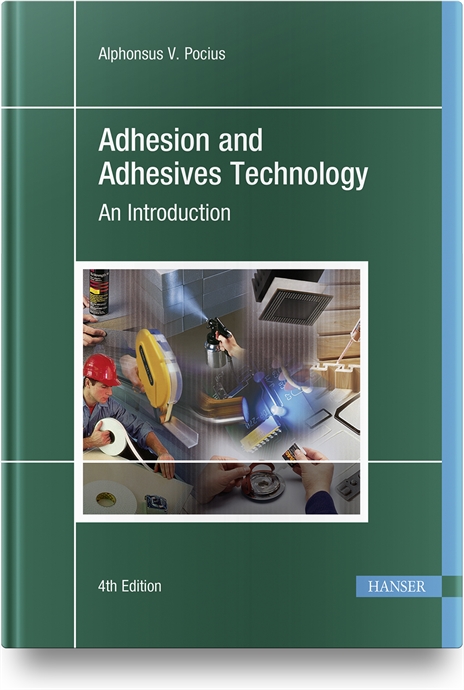Pressure-sensitive adhesives (PSAs) offer numerous advantages for aerospace assembly. PSAs enable assembly of dissimilar materials with a continuous bond area. PSAs more uniformly distribute stresses and strains. PSAs preserve the strength and integrity of the materials to be joined, because they do not require holes to be punched or drilled in the substrates. Since PSAs do not require curing time, they are faster than liquid adhesives. And finally, with no rivet or screw heads protruding from the surface of the substrate, PSAs improve aesthetics.
There are a variety of applications for PSAs in aerospace assembly.
For example, the inside of the passenger cabin is lined with a flexible plastic film, such as polyvinyl fluoride (PVF), polyamide and PEEK. These films are known for their flame retardancy and resistance to abrasions, chemicals and ultraviolet radiation. Securing these flexible films to rigid substrates with mechanical fasteners is not an option, but PSAs can do the job easily. PSAs can be formulated to bond to aluminum, painted surfaces, and substrates with differing surface energies.
Carpeting is another application for PSAs. Airliners require carpets that meet FAA specifications for flammability, smoke production and toxicity. PSAs keep the carpet in place. For this application, the tape is applied to the flooring material, the liner is removed, and the carpet is laid down on top of the tape. The tape must be lightweight, yet strong enough to secure the carpet at all times. The tape is also required to self-extinguish, according to federal aviation requirements 25.853 and 25.855. This is achieved by including flame-retardant additives into the adhesive.
Carpet is traditionally secured to honeycomb panels. However, not all PSAs will bond to with such panels, because of their low surface energy. Aerospace assemblers typically use a 2-inch wide strip of tape that spans the entire length of the plane. This strip is repeated approximately every 3 feet. The carpet is then rolled out on top of it.
Planes go through maintenance, repair and overhaul (MRO) every 400 to 600 flight-hours, depending on the aircraft. Besides safety checks, this process often includes replacing the carpet, and that requires more tape. That’s why removability is an important feature for many aerospace PSAs. One side of the tape is formulated to create a permanent bond with the carpet, while the other side is designed to removed cleanly from the honeycomb panel.
Insulation and Damping
Thermal insulation is wrapped around the inside of the fuselage. PSAs are used to seam the insulation materials together before placing the insulation between the plastic structure of the cabin and the aluminum frame of the fuselage. A single-coated tape is also used in the cargo pit along the plastic panels to seal cargo compartment liners, bonding to the plastics and not the insulation material.
Acoustic insulation is also used in the fuselage, between the plastic structure of the cabin and the aluminum frame of the fuselage. This insulation muffles the sound of the jet engines and the wind streaming past the fuselage. It consists of tough materials, such as glass, polyester or nylon fibers. These are in turn sealed up in films that are often made of metalized polyester, such as PEEK or PVF. The most suitable way to seal off these films is with tape. Sealing off the insulation is accomplished with a single-coated tape with a face-stock similar to the material that encapsulates the fibers.
A related application is structural damping. The body of an aircraft vibrates from the turbulent layer of air moving along the fuselage. To reduce this vibration and noise, damping tiles are bonded directly against the inside of the fuselage skin. Damping tiles consist of a PSA, an elastomeric material and a foil. The adhesive layer can be specifically for mounting the damping tile to the fuselage, or it can be formulated for specific rheological properties to aid in the damping of the vibrations.
Wire Harnesses and Other Applications
Aircraft wire harnesses are wrapped in a single-sided tape to shield them from abrasions and high temperatures and to limit motion of the harness. The tapes encapsulating these fibers are often laminated with a scrim to provide puncture resistance against structures and piping. Metalized-glass cloth acts as a thermal barrier.
Throughout the production and MRO of planes, tapes are used to protect the windows while the outer skin is painted, coated or sandblasted. These are single-coated foil tapes that require an adhesion that can resist high temperatures and chemicals, but still be cleanly removed. Structures inside the plane, such as floor panels, demand a film and adhesive to prevent moisture from collecting on it and causing corrosion.
Graphic overlays are yet another application for PSAs. “No smoking” signs are usually made of polycarbonate that gets laminated to a transfer tape and then bonded to the cabin substrates. Graphic overlays are also used in the cockpit for directions or labeling around buttons
Requirements for Tape Selection
To be a fit for the aerospace industry, tapes and adhesives must meet several criteria. These include:
Temperature resistance. Temperatures can exceed 500 F near the jet engine. On the other extreme, flying temperatures can plunge to a low of up to -40 F. Adhesives exposed to these conditions must resist these extreme temperatures for long durations.
Chemical resistance. Tapes may be exposed to hydraulic fluid and other chemicals. Adhesives must be able to resist these chemicals.
Strong, resilient bond for permanent applications. Insulation, cargo pit seaming and other applications require a permanent bond. OEMs have established adhesion specifications for each bonding application. PSAs are subjected to environmental and temperature testing to ensure they meet peel strength requirements.
Flame retardancy: Many applications within a plane require the adhesive to have a level of flame retardancy.










